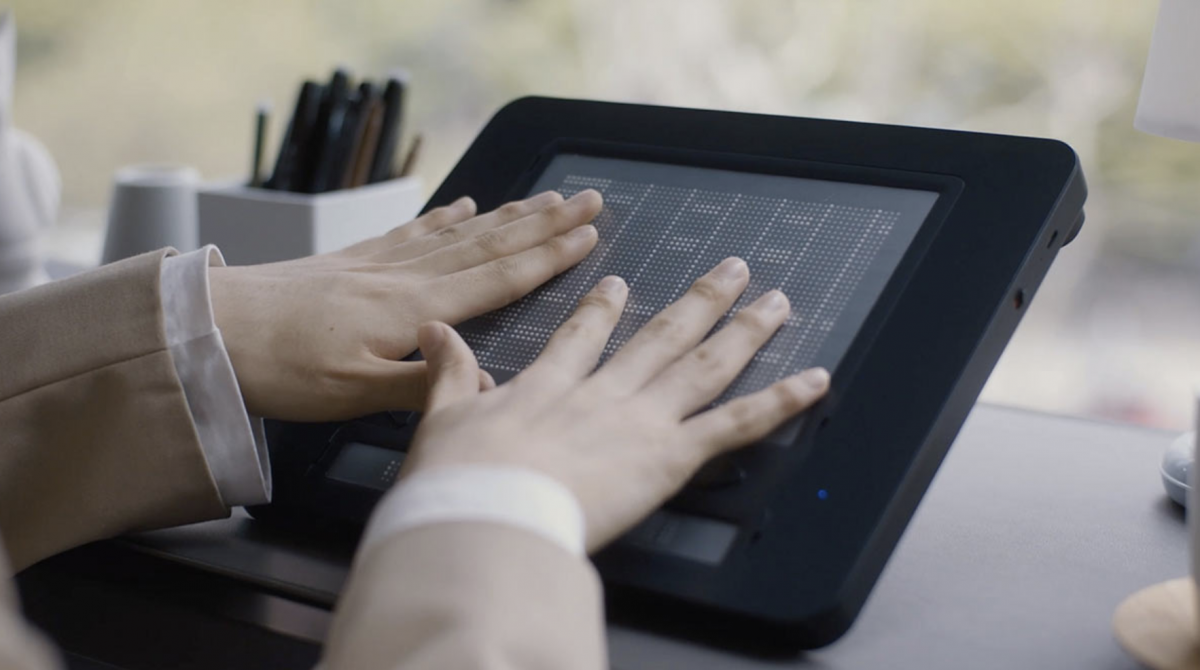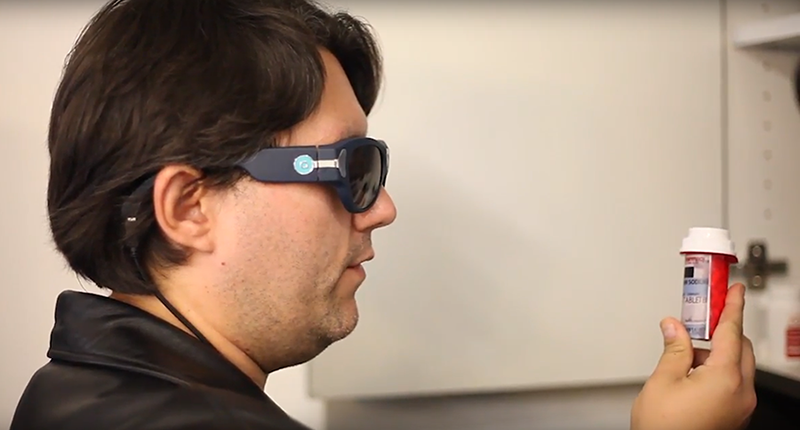AI-Powered Visual Aids: Enhancing Self-Reliance for Blind Users
Wiki Article
Enhancing Lives With Advanced Assistive Devices for the Blind
The combination of advanced assistive tools for the blind is changing just how people experience their environments and connect with their neighborhoods. What does this advancement mean for the future of assistive technology and its duty in encouraging individuals?Introduction of Assistive Tools
Assistive tools for the blind incorporate a diverse array of tools and modern technologies made to boost freedom and boost the lifestyle for people with visual impairments. These tools satisfy numerous requirements, from navigation and mobility to interaction and daily job management.One of the main classifications of assistive devices includes wheelchair help, such as white canes and overview pet dogs, which help users browse their surroundings safely. Electronic traveling aids, furnished with sensing units and audio responses, additionally play a significant function in movement improvement.
Additionally, tools that help with daily living tasks, such as adaptive kitchen area tools, Braille labels, and chatting watches, equip individuals to perform jobs individually. Communication aids, including screen readers and Braille screens, promote accessibility to details and make it possible for people to engage successfully with the digital world.
Furthermore, low-tech services like multiplying glasses and large-print products stay important for lots of individuals. Collectively, these assistive gadgets serve not just as functional tools however likewise as important enablers of autonomy, cultivating better involvement in a globe that often prioritizes sighted experiences. Their assimilation right into life is important for advertising inclusivity and boosting overall well-being for those with aesthetic impairments.
Cutting-edge Technologies in Use
Advancement in innovation has considerably changed the landscape of tools available for people with aesthetic impairments. Among one of the most remarkable improvements are clever glasses incorporated with enhanced reality, which offer real-time navigating support and things acknowledgment. These tools take advantage of advanced cams and fabricated intelligence to deliver auditory signs, boosting the customer's spatial awareness and freedom.Furthermore, mobile applications have arised as powerful resources, enabling customers to determine money, reviewed message out loud, and browse strange settings via verbal instructions. Devices such as Braille displays and refreshable Braille devices proceed to develop, using smooth connectivity with mobile phones and computer systems, therefore enhancing communication and accessibility to information.
Wearable innovation, including smartwatches outfitted with voice-activated features, even more equips customers by helping with fast accessibility to alerts and notifies without requiring visual involvement. Responsive maps and 3D printing are likewise gaining traction, using tangible representations of rooms that aid in positioning and flexibility training.
Collectively, these innovative innovations not just boost the every day lives of visually damaged people yet additionally foster higher independence, inclusivity, and interaction with the wider neighborhood, thus improving assumptions of ease of access. (Assistive technology for the blind)
Personal Stories of Empowerment
Empowerment often emerges from individual experiences that highlight the transformative effect of technology on people with aesthetic disabilities. Take, as an example, the tale of Sarah, a young artist that restored her passion for paint with using a wise walking stick geared up with challenge detection. This device not just facilitated her movement but instilled a newly found self-confidence, enabling her to navigate public spaces independently and seek her creative endeavors.
These stories underscore the extensive impacts that advanced assistive devices can have on daily life. By enabling people to get over obstacles, innovation fosters a feeling of autonomy and self-respect. Such empowerment stories act as a testimony to the capacity of technology, illustrating how the right tools can significantly improve lifestyle and open doors to new opportunities for those with visual impairments.
Benefits of Advanced Solutions
How can progressed options fundamentally improve the lives of people with visual problems? The integration of innovative technology into assistive devices significantly transforms everyday experiences for those influenced by vision loss. These innovative services supply unprecedented autonomy, allowing users to navigate their atmospheres with self-confidence. Devices such as smart canes furnished with sensing units, navigating applications, and wearable innovation are created to give real-time responses, enhancing spatial recognition and lowering the risks associated with movement.
In addition, progressed assistive modern technologies promote social addition by assisting in interaction and interaction. Voice-activated tools and applications enable individuals to accessibility info and engage with their surroundings independently, damaging barriers that formerly impeded their participation in instructional, expert, and social setups.
Additionally, the personalization and adaptability of these remedies cater to the diverse requirements of users, thereby enhancing their general lifestyle. Boosted capability, such as things acknowledgment and text-to-speech abilities, empowers people with visual problems to carry out jobs that they may have once located testing. Ultimately, advanced assistive modern technologies not just improve independence and safety and security yet likewise promote self-respect and self-worth, permitting individuals to lead fulfilling lives.
Future Patterns in Assistive Tech
As technology proceeds to progress, the landscape of assistive gadgets for the blind is poised for exceptional innovations that will Smart glasses for the visually impaired better improve ease of access and independence. Arising trends in assistive modern technology show a shift toward enhanced assimilation of man-made intelligence (AI) and artificial intelligence, allowing tools to adjust to individual user needs in real-time. These technologies are anticipated to facilitate more intuitive navigation systems that can determine challenges and give audio feedback, considerably enhancing outside flexibility.In addition, the development of wearable tech, such as wise glasses furnished with increased reality, will enable customers to receive contextual info regarding their environments, thereby enhancing their spatial understanding. Moreover, innovations in haptic technology guarantee to create responsive feedback gadgets, permitting users to regard details through touch, improving discovering and communication with their atmosphere.
Telecommunication advances are also paving the way for remote support options, where trained professionals can offer advice using video phone calls, ensuring assistance is easily available. As these fads unfold, the future of assistive tools for the blind will undoubtedly cultivate greater freedom, empowering people to navigate their world with self-confidence and simplicity.

Final Thought
The combination of sophisticated assistive devices for the blind represents a significant advancement in cultivating freedom and boosting lifestyle. By using cutting-edge modern technologies, these tools equip individuals to navigate their settings with better self-confidence and freedom. As the area proceeds to develop, ongoing research and growth will likely generate a lot more innovative remedies, better changing the lived experiences of people with visual impairments and advertising a higher sense of incorporation within culture.
The integration of sophisticated assistive gadgets for the blind is changing exactly how people experience their surroundings and interact with their communities. The assimilation of advanced innovation into assistive gadgets significantly transforms day-to-day experiences for those affected by vision loss.As modern technology proceeds to develop, the landscape of assistive devices for the blind is positioned for remarkable improvements that will certainly further boost accessibility and self-reliance. Arising trends in assistive modern technology suggest a change towards boosted assimilation of man-made knowledge (AI) and maker knowing, making it possible for gadgets to adjust to private user requires in real-time.The assimilation of sophisticated assistive devices for the blind stands for a significant innovation in cultivating independence and enhancing high quality of life.
Report this wiki page